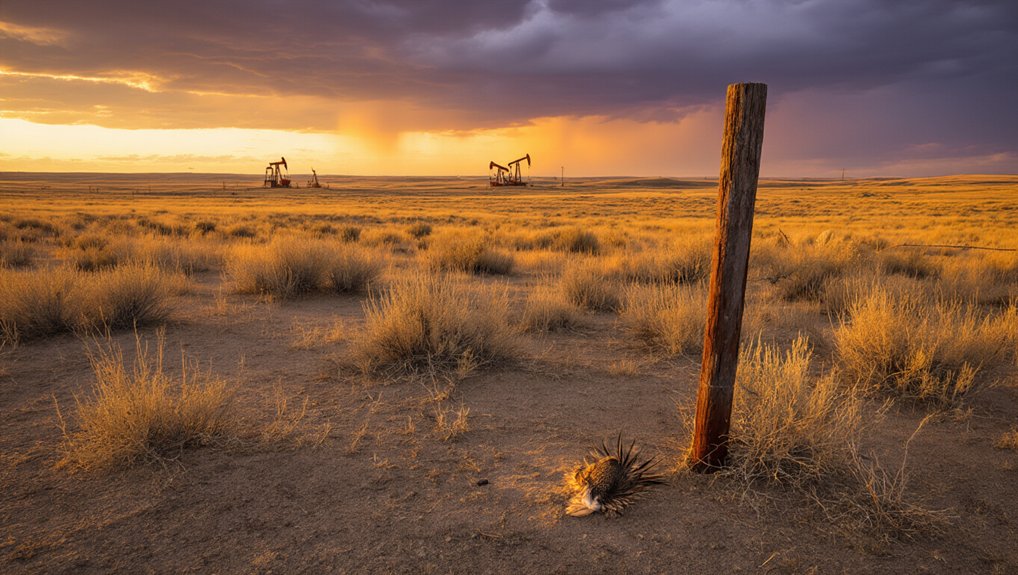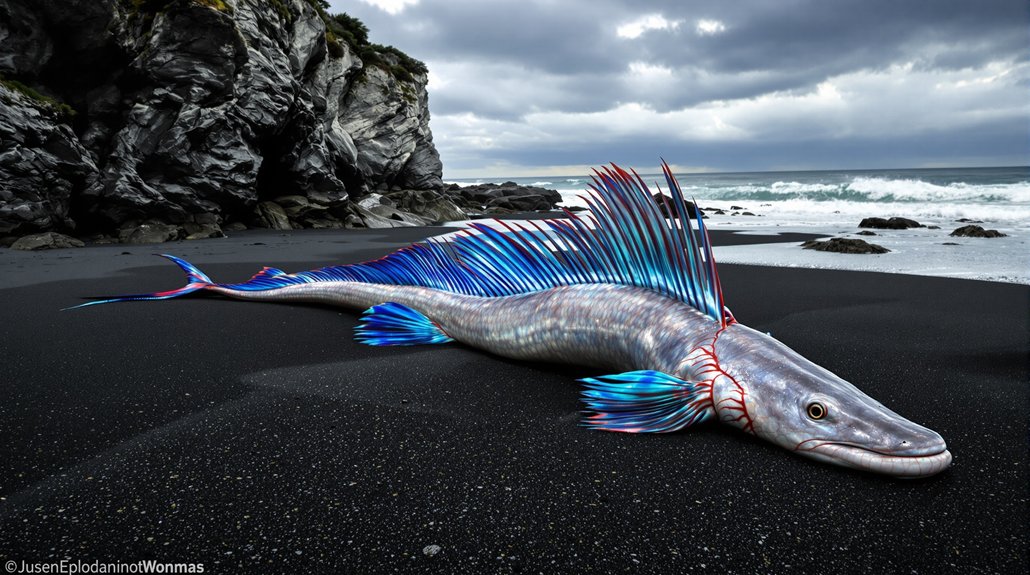While America busies itself with the latest smartphone release and political squabbles, an entire ecosystem is vanishing right under our noses. North Dakota’s sage grouse population has effectively disappeared, the latest casualty in an 80% nationwide decline since 1965. It’s not like we didn’t see this coming.
These chicken-sized birds need vast, undisturbed sagebrush to survive. Not fragmented patches. Not “mostly intact” environments. The real deal. And we’re losing about a million acres yearly to development, wildfires, and invasive species. Do the math.
Sage grouse don’t want compromises. They need intact sagebrush landscapes that are vanishing at alarming rates.
Cheatgrass is public enemy number one, having already invaded 50 million acres of sagebrush country. This opportunistic invader might as well be holding a match to the terrain. It burns hotter and more frequently than native plants, creating a vicious cycle: fire, invasion, more fire. Native sagebrush doesn’t stand a chance.
Remember those conservation plans from 2015 that were supposed to protect 90% of breeding habitat? Funny story—they got gutted. Over 2.4 million acres of critical habitat were subsequently leased to oil and gas companies. Mining protections? Slashed. Ten million acres that should’ve been off-limits? Now fair game.
The sagebrush ecosystem supports 350 species beyond just grouse. Mule deer. Pronghorn. Countless birds. Once spanning 150 million acres across the western United States, this vital landscape continues to shrink at an alarming rate. The decimation continues at an annual rate of 3%, significantly worse than scientists previously calculated. They’re all watching their homes disappear.
Restoration efforts face brutal odds. Sagebrush grows painfully slow. Climate change makes everything worse. Droughts last longer. Fires burn hotter. Good luck establishing native plants when invasive weeds are hogging all the resources.
North Dakota’s empty sagebrush is the canary in the coal mine—except the canary is a 5-pound bird that’s been around since the Pleistocene. When an entire state loses its sage grouse population, it’s not just about one species disappearing. It’s an ecosystem in free fall.
But hey, how about that new phone release? The parallel decline of natural habitats and rise of renewable energy development presents both challenges and opportunities for conservation efforts that must balance environmental preservation with our transition to cleaner power.
References
- https://www.trcp.org/2021/03/30/new-report-highlights-even-steeper-long-term-decline-greater-sage-grouse-populations/
- https://www.nature.org/en-us/what-we-do/our-priorities/protect-water-and-land/land-and-water-stories/sagebrush-sea/
- https://wildlife.utah.gov/pdf/fact_sheets/sage_grouse.pdf
- https://www.audubon.org/news/frustration-abounds-five-years-after-historic-sage-grouse-agreement
- https://www.usgs.gov/news/national-news-release/new-research-highlights-decline-greater-sage-grouse-american-west








